Surviving without water: How the occupiers drove Donetsk to a humanitarian catastrophe
In occupied Donetsk, the water supply situation has reached a critical level: residents receive water once every three days, stand in lines at cisterns, carry murky liquid from basements, and in high-rise buildings they don’t see a drop for weeks.
When at the beginning of July 2025 the occupation administration of Donetsk announced a new water supply schedule — once every three days from 17:00 to 21:00 — it seemed like a temporary forced measure. But for many city residents, it became the culmination of a years-long crisis. The main water pipeline "Siverskyi Donets – Donbas" was destroyed by shelling back in 2022, and the construction of an alternative line from the Don didn’t solve the problem: even russian officials admit that the new channel provides only a third of the agglomeration’s needs. Worn-out pipes and large losses (up to 60%) turn the supply into a real lottery — the water often simply doesn’t reach the upper floors.
An excessively dry summer, dried-up reservoirs, and destroyed pumping stations forced the occupation authorities to strictly ration the supply. In four hours, people must gather enough for three days, fill every possible container, wash themselves, do laundry. Residents call this torture, because water is often absent or disappears an hour after it starts.
Local social media accounts post numerous photos and videos of lines at water trucks, where dozens of people stand with canisters and buckets.
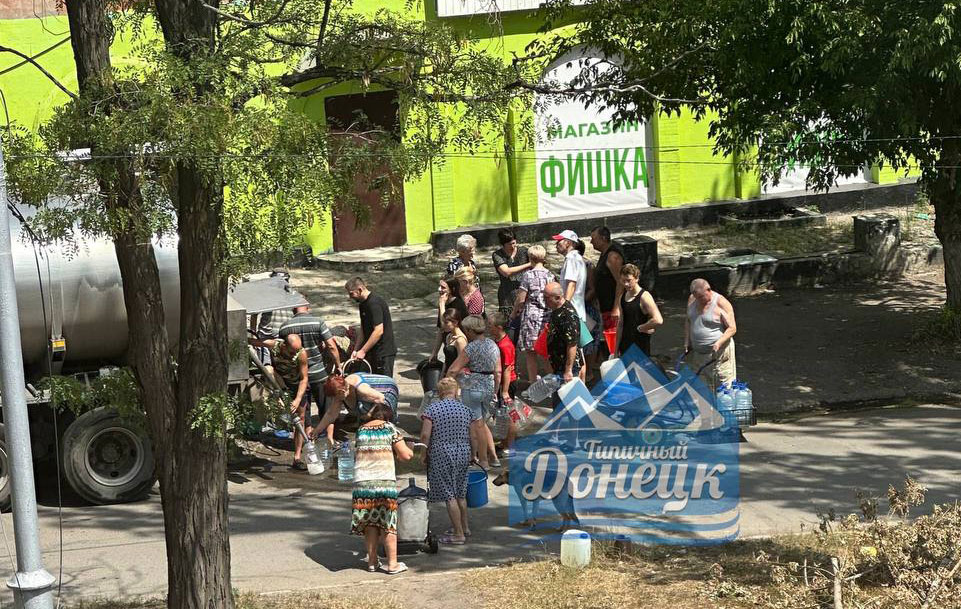
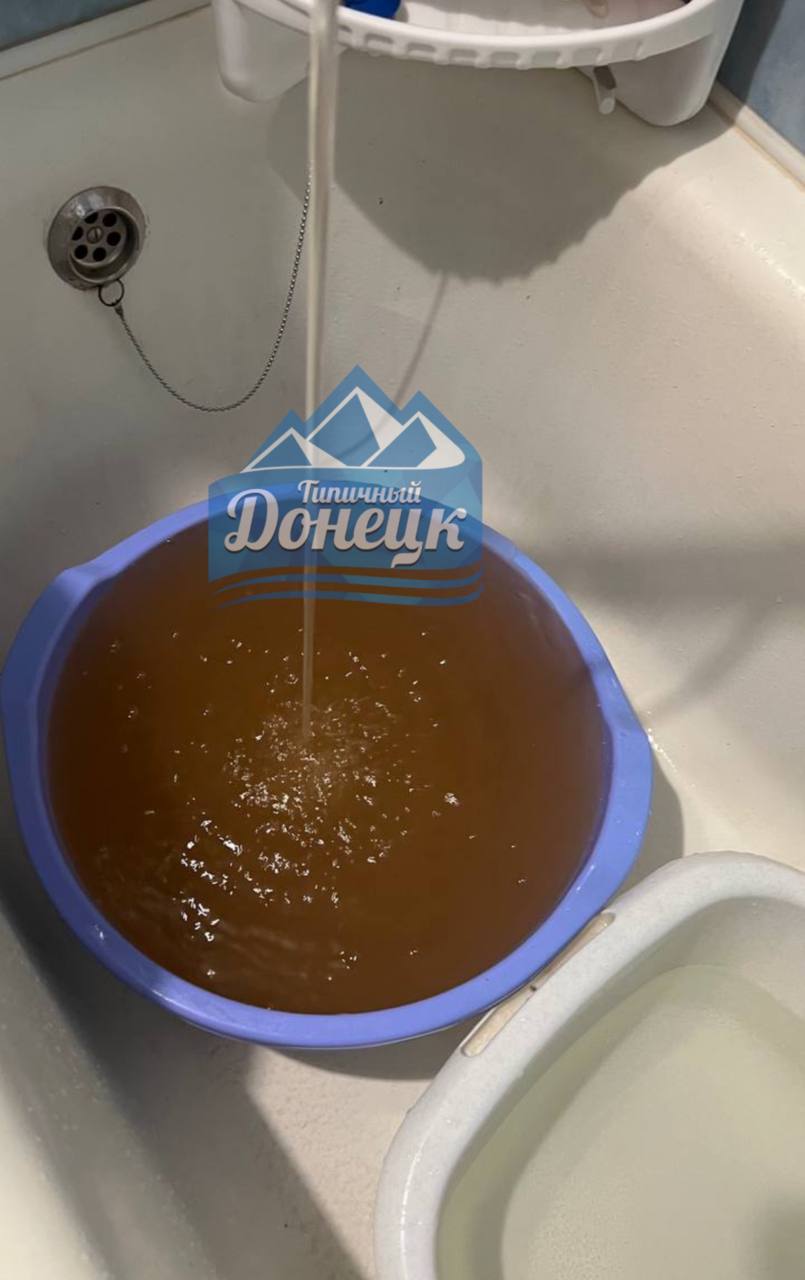
"The water is murky, with sediment. We can’t flush the toilet, can’t wash hands. It comes in spurts, and the upper floors don’t get anything at all", - write residents of the city that once hosted "Euro 2012".
"We live in the 21st century, and my husband and I heat water from canisters on the stove to bathe. Our neighbors are getting sick — intestinal infections have started. This isn’t life", - another woman writes in a public Telegram channel.
The water that does reach the taps is yellow, murky, with a distinctive smell and unfit even for cleaning. People say it ruins plumbing, leaves a rusty residue, and those who try to wash with it get skin irritation.
"I don’t know what kind of liquid this is. But we’re forced to use it. Filters clog in 3 days. Kids are getting rashes", - writes a Donetsk resident in the comments under a YouTube video.
In the 21st century, Donetsk residents shower from bottles, use plastic bags instead of toilets, and stand for hours in lines for water. Water, supplied once every three days, is yellow and stinks. This is not a local malfunction — it’s total infrastructure collapse under russian occupation.
Chronology: how Donetsk was left without water supply
Before the start of the russian aggression, Donetsk received 94% of its drinking water through the "Siverskyi Donets – Donbas" canal. Since Soviet times, this waterway had supplied industrial centers, mines, and the daily needs of more than three million residents. In 2014, after the occupation of part of the Donetsk oblast, the situation began to deteriorate: the canal was frequently shelled, pumping stations were left without power, and repairs were carried out in emergency conditions.
In the following years, the water supply schedules were repeatedly adjusted: in some places, water was supplied once every two days, in others — daily for a few hours, depending on the condition of the pumps and safety along the contact line. People learned to conserve and set up reservoirs for storage.
At the same time, it’s worth noting that Ukraine did not stop supplying water to the occupied territory. Meanwhile, the "authorities" of the "DNR" did not pay Kyiv for it, even though they collected payments from local residents.
The situation sharply worsened in 2022, when russian troops effectively destroyed the main canal infrastructure while trying to cut off water supplies to Ukrainian cities. Pumping stations on the contact line were blown up, and filtration stations on Ukraine-controlled territory stopped sending water to the occupied areas. In response, the occupation administration promised to quickly build a new pipeline, but even after three years, it still hasn’t fully come online.
2022–2024 passed under the banner of temporary solutions: wells were drilled, water was pumped from mines, and small local systems were launched. In June 2023, construction began on the so-called "Don – Donbas" canal — a pipeline over 200 km long from the russian Rostov oblast. The deputy defense minister Timur Ivanov, later arrested for bribery, was responsible for the construction. The project's cost was estimated at tens of billions of rubles, but neither the budget nor the work schedule was disclosed. According to local "activists", the work dragged on, equipment sat idle, and pipes lay for long periods in the fields. In 2024, the "authorities" reported the canal’s launch, but in reality, it supplies only a third (at best) of the required volume.

Meanwhile, reservoirs began to dry up. The Volyntseve and Khanzhenkivske reservoirs, which supplied water to the Donetsk agglomeration, lost most of their volume: water levels dropped by several meters. Dry winters and hot summers accelerated evaporation, and without replenishment from the Siverskyi Donets, the bodies of water turned into shallow lakes. This is why the supply schedule had to be reduced to once every three days.
"A stream from a mosquito’s d*ck" and plastic bags in the toilet
The lack of water has turned into memes and jokes, behind which real despair hides. The Telegram channel of the traitor Tatiana Montian calls the water coming from the taps “a stream from a mosquito’s d*ck”, and users add: “at least it has a d*ck”. These phrases gained popularity even among pro-russian bloggers. The “war correspondent” Steshin sarcastically notes that in Donetsk “only the d*ck remains, and there’s nothing to get it wet in”.
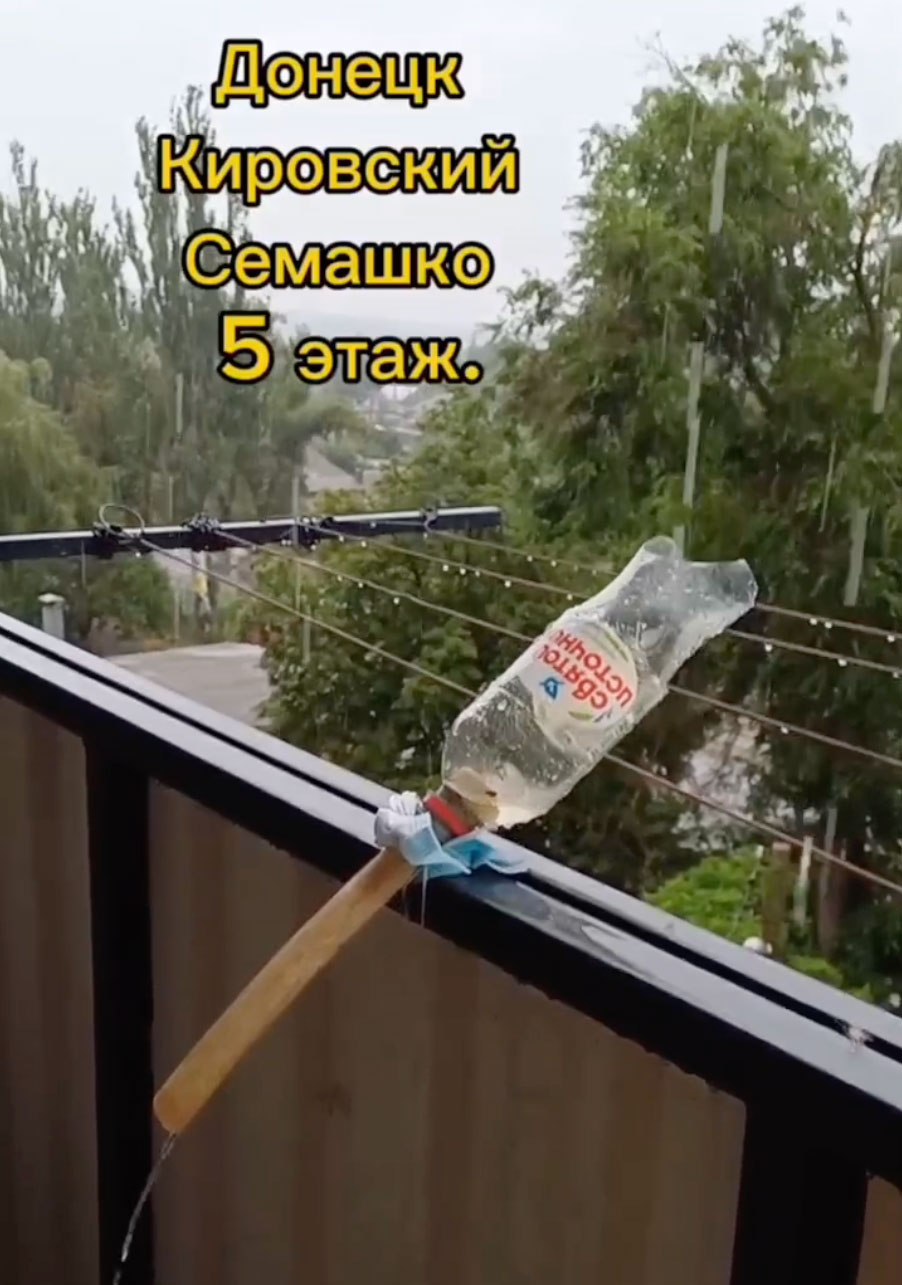
Even more explicit posts appeared in the Telegram channel of former deputy Oleg Tsariov. He admitted that in Donetsk, there’s nothing to flush toilets with — people put down plastic bags, do their business in them, and then throw them in the trash or just under windows. In the same post, he writes that the new Don water pipeline provides only a third of what’s needed, and industrial enterprises can’t function because of it.
Lines, buckets, and "water check-ins"
Social media has become a hub for coordination and mutual assistance. Residents create group chats with titles like “Water Check-in Donetsk” and literally stand by, ready to report: “the water’s flowing!”
People share their stories along with photos: apartment buildings with plastic jugs at the entrances, water lines stretching across city blocks, elderly with buckets. Some city dwellers arrive long before distribution starts and stand for hours. The water often has a rusty color and smells like swamp. In such conditions, washing machines are left unused — people wash clothes in plastic tubs.
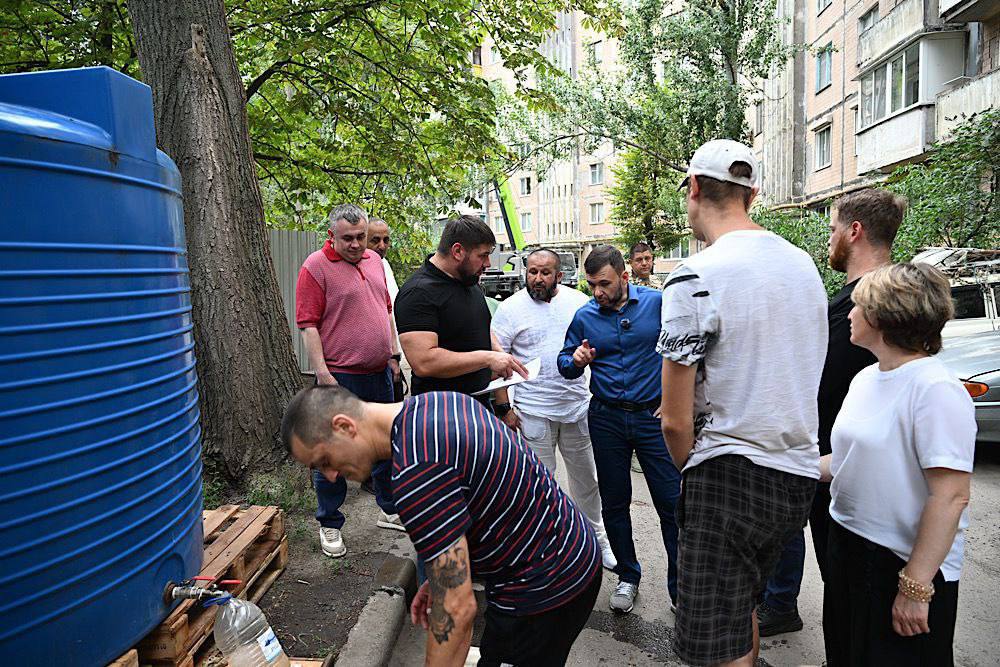
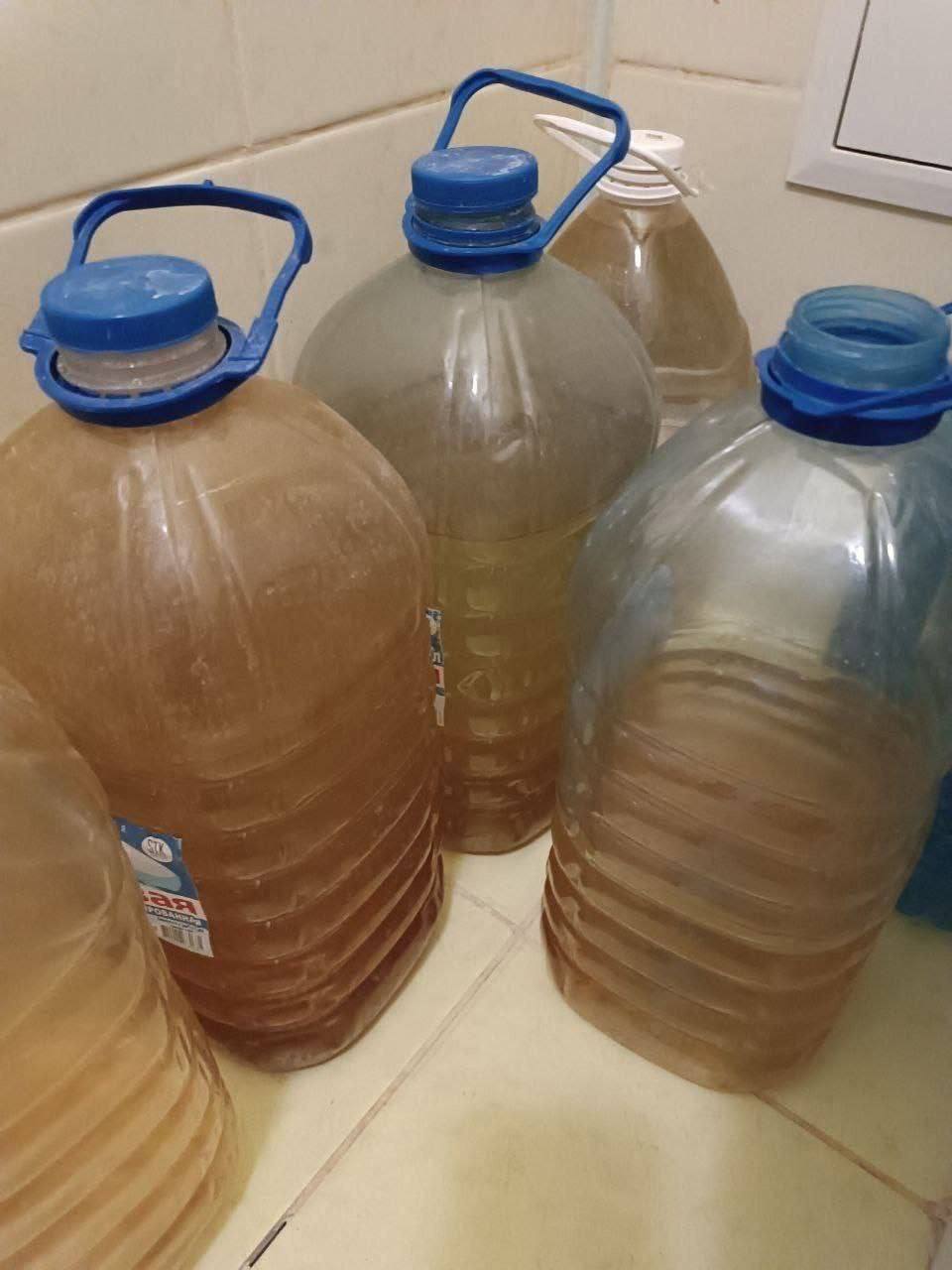
In the outskirts, the situation is even worse. According to the Telegram channel “Patriot of Donbas”, residents of the village of Krynychky near Torez haven’t seen water in over a month. People from the 3rd Skhidnyi district (a neighborhood within the city) write that 80% of the men here fought against Ukraine, but now they’re begging for the basics: “Give us water, there hasn’t been any since June 18th!” Several posts show a complete absence of sewage systems: waste spills into the streets, and the stench spreads across the neighborhood.
Observers note that the list of settlements where water is supplied once every three days is constantly expanding. It now includes not only Donetsk and Makiivka, but also Mariupol, Khartsyzk, Ilovaisk, Zugres, and other cities. In some parts of Mariupol, the schedule is extremely harsh: water is available for only two hours every three days, and the closer to the sea — the saltier the taste.
Water lines have become the new reality. People from different parts of the city form mini-delivery groups: those with cars drive water to relatives and neighbors. Young people help the elderly carry heavy bottles. Some local entrepreneurs have started organizing private water deliveries — water is sold at high prices, unaffordable for most families.
Telegram channels have become not only a space for complaints but also for instructions. Bloggers advise pre-boiling technical water and letting it sit for 24 hours, using activated charcoal and potassium permanganate. Some residents create makeshift filters using sand, charcoal, and fabric. Lifehacks are spreading: collected rainwater can be stored in bathtubs, and wet wipes can be used for washing hair.
An open letter to putin: “We’re not asking, we’re demanding”
After the introduction of the three-day water supply schedule, Donetsk residents felt like their voices were going unheard. On July 22, the “War Correspondent Kotenok” Telegram channel published an open letter to vladimir putin. The authors remind that since 2022, water was supplied every other day, but now it’s every third day — and its quality is horrendous: it’s cloudy, with dirty sediment, and doesn’t even reach above the second floor. People point out that the Don water pipeline provides only 6% of the city’s needs, constantly breaks, and water has to be bought for 5 rubles per liter, which is twice as expensive as in Rostov. The letter ends with the words: “We’re not asking — we’re demanding. You promised us water, and all we got were pretty fountains”.
А recently, another appeal to putin appeared — this time from the children of Donbas...

This letter became not just a cry from the heart, but a litmus test of public sentiment. The comments under the post show: even supporters of the “russian world” are outraged — the lines are too long, the rates are too high, the lies are too many.
Who’s to blame?
At whom is the anger of the residents directed? The theories vary. Some posts repeat the official narratives about “AFU sabotage”, allegedly shelling the water pipeline — even though it’s located on occupied territory. Others blame local officials and construction companies, who allegedly stole billions during the building of the new pipeline — that’s exactly what Tsariov writes about, calling the project “an epic theft”. Some complain about corruption: the pipes are 100% worn out, no one plans to fix them, because the budgets have long been “absorbed”.
Russian war correspondent Kotenok notes on his channel that people waited eight years to join russia, but ended up with conditions worse than before the “special operation”.
Some users are outraged that amid the collapse, authorities are opening fountains and putting on light shows. “How can this be?” asks a member of the “Typical Donetsk” group on social media. “We go weeks without seeing water, and they’re spraying it in the city center!” While people are saving every drop, the occupation administration launches a light-and-music fountain on Lenin Square and floods an ice rink.
There’s another category of posts — blatant propaganda. Some channels blame the water shortage on the Armed Forces of Ukraine, calling it a “water blockade”. These publications are often accompanied by fake maps, showing water intakes on territory controlled by Ukraine, even though in reality they’ve been destroyed on the occupied side.
Other channels suggest people “endure and wait” until final victory, using the slogan “let’s suffer for russia”. But real commenters under such posts write that they can’t wait any longer, and the real problem is corruption and mismanagement.
Health and economic consequences
The lack of clean water is not just an inconvenience, but a direct threat to health. Doctors in Donetsk report outbreaks of intestinal infections, skin irritations, and allergies. Hospitals are forced to limit water-based procedures, and staff use disposable dishes and wipes instead of washing their hands.
"My elderly neighbor lost consciousness on the fifth day without water. She was saved by children who came from another district with canisters. It all feels like a siege", — reads a message from a user in the Petrovsky district.
Industrial enterprises, especially chemical ones, cannot operate without large volumes of water. Oleg Tsariov admits that the supply restrictions are already halting certain factories and mines. The energy sector is also under threat: the Zuivska TPP is working at its limit, and without enough water for cooling, it could shut down.
What’s next?
Residents of Donetsk now live by a calendar where the main dates are the days when “the water will come”. They fill plastic bottles, carefully label them, and store them in their bathrooms. Some buy filters and try to collect rainwater. But everyone understands: until the Siverskyi Donets–Donbas canal is restored or an alternative source is found, the water collapse will continue.
Local Telegram channels have become not only sources of information but also barometers of public mood: they show how patience turns into rage. Even under strict censorship, people find ways to tell the truth — and make it clear that the false stories about a “water blockade” won’t mask the real stench of sewage under their windows.
“I live on the fourth floor, but I haven’t used the faucet in two years — only air comes out of it”, - says Elena, a resident of the Petrovskyi district. “My husband and I carry water from neighbors on the first floor. We have a small child, so we have to buy bottled water for drinking and cooking. It’s a big expense, and we don’t know how much longer we can live like this”.
Another interviewee, 70-year-old Nikolai from Makiivka, says he used to work at a pumping station. “I saw how the canal was destroyed, and how now they promise who knows what. We drank water from the Siverskyi Donets all those years, and now we’re supposed to be happy when yellow liquid comes out once every three days. Our children left because they can’t live without water”.
In the Telegram channel “Donetsk 24”, a reader shares: “We had water for an hour. We didn’t manage to collect it. Now we have to wait another three days. My husband has to go to the toilet in a bag and then throw it out with the trash. It’s shameful to write this, but let everyone know how we live”. Stories like this are repeated from district to district, with hundreds of sympathetic comments under each post.
“Why doesn’t the head of the ‘DNR’ push for water pipelines to Donbas, the elderly, disabled, bad weather, what containers—what are you doing to Donbas, enough nonsense, give us water from the tap. I’m 65, barely dragging water up to the 3rd floor, I have two bedridden family members. I don’t have the strength to carry water to my 88-year-old lonely neighbors, and I feel so sorry for them. GET US WATER IN THE TAP!”, - writes Natalia E.
Regional specificities
The water shortage affects not only Donetsk. In Horlivka, Yasynuvata, and Snizhne, water is supplied on a similar schedule — once every two or three days. In Mariupol, where infrastructure is almost entirely destroyed, the situation also remains dire: the city’s only water supply source now is the Staryi Krym reservoir, the level of which is critically dropping. A conservation regime has already been introduced in the city — water is supplied for only about four hours every two days, and the schedule is often not followed.
"But even these meager schedules aren’t being followed. Either there’s no water at all, or it trickles out in a barely visible stream, or its color is frightening — blood-colored water... Locals are outraged by the absurdity: there’s no water, yet leaks, including sewage ones, are constant. Water flows through the streets, fountains are turned on. To cope somehow, some people search for natural water sources, like in the area of Petrovskyi Park", - noted former city mayoral advisor Petro Andriushchenko.
According to experts, if the water level in the reservoir drops even further, the city may face a full-scale water crisis by the end of the summer.
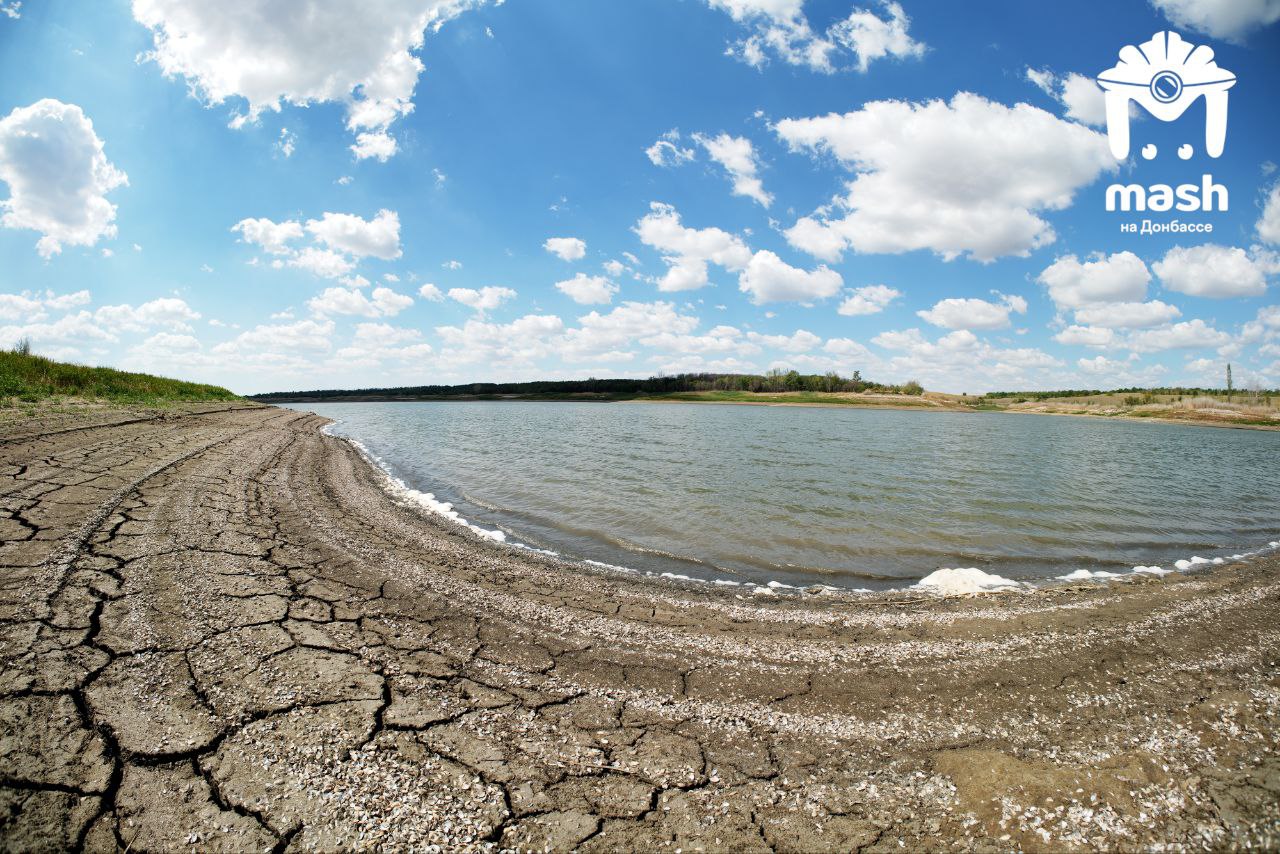
At the same time, in cities of the Donetsk oblast controlled by Ukraine, such as Kramatorsk or Sloviansk, the situation is significantly better. Here, water is supplied without interruption, although accidents and shelling do occur due to proximity to the front line. This once again underscores: the main cause of the water collapse in the occupied territories is not a lack of resources, but the war and the deliberate actions of the occupational administration.
The situation with water in occupied Donetsk is no longer a domestic issue. It is a humanitarian crisis, taking on the characteristics of an ecological disaster. The authorities are not responding properly, the population is left to face the tragedy alone, and international organizations are effectively blocked from providing assistance.
"This is not a local accident. This is the total degradation of everything that’s left of the former city infrastructure", - commented a Donetsk resident in one of the public forums.
By Vladyslav Bulatchik, OstroV
